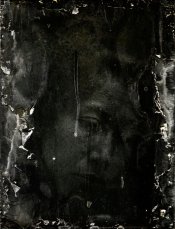Robert Hall
Member
So for some reason this came as news to me. I understood that the process needed to be done on a silver surface. Now in a couple of references I have seen the statements of Daguerreotypes being done on glass. I understand that the image is fragile and would be quite typical to lay a piece of glass over the top to protect the image.
Is this factual? Have Daguerreotypes been done on glass?
Thank you.
Is this factual? Have Daguerreotypes been done on glass?
Thank you.









